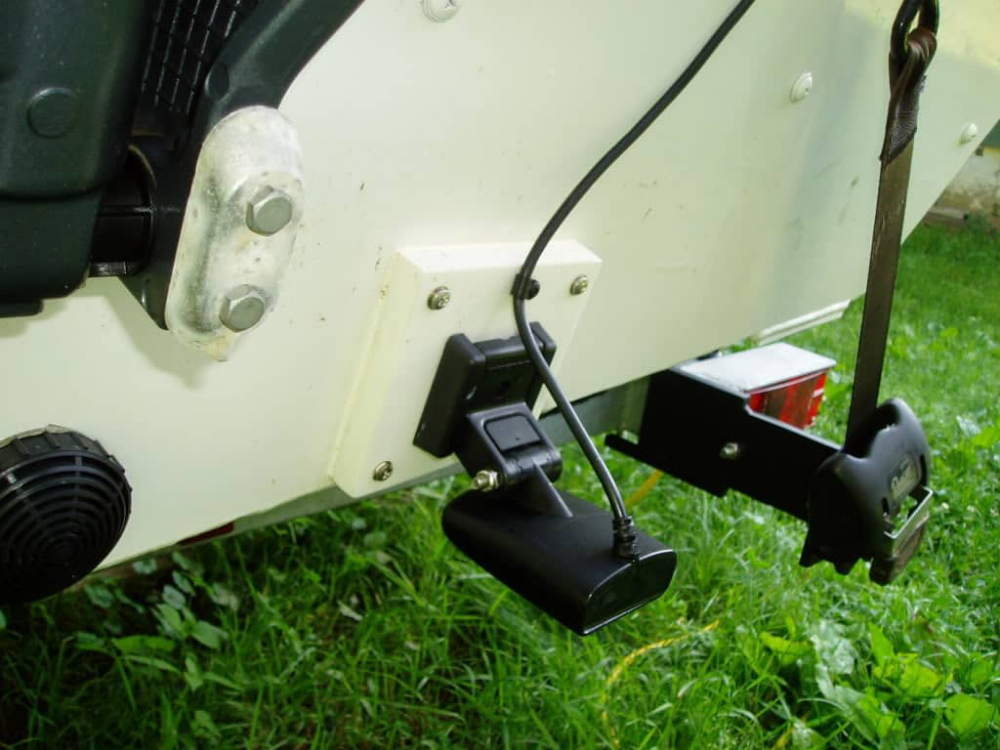Thinking of buying a new MFD, then check out some questions and answers to help narrow down your choices. Plus we take a look at the very latest 12” displays.
In this era where you can surf the web, take photos and play streamed songs on your smartphone, it’s all about being connected. Boaters want to connect their VHF radio to a GPS, monitor their fuel consumption and see radar images on one display. If you haven’t shopped for marine electronics recently you’ll notice that things have changed a lot, and the choices can be confusing. We’re here to help, with some questions and answers to help narrow down your choices. Plus we take a look at the very latest 12” displays.
What is a MFD?
Whereas, the fishfinder performs one function—showing a picture of what’s below your boat and a chartplotter is a GPS navigator that displays high-quality marine maps onscreen, the multi-function displays are made to be the hub of a large and comprehensive onboard network.
Often found on bigger boats, you can place one display at the helm and another in the nav station, flybridge or tuna tower, they are now very popular in larger trailer boats. You’ll usually purchase a separate, remote GPS antenna, black box sounder, and often the cartography of your choice, since maps are often not preloaded.
Do you want to connect more than one display to show data on your network?
NMEA 0183: If you have marine electronics onboard that are older than a couple of years, they are probably networked using the NMEA 0183 standard. In fact, most of the chartplotters, combos and fishfinders on this site communicate using this system. Problems and complications happen when connecting devices from different manufacturers, of different ages, and when one device in the network fails. NMEA 0183 has served us reasonably well since 1983, but as devices have become more sophisticated, newer standards have increasingly replaced it. Simple devices, like a basic fishfinder, still use 0183 as a serial data interface, even if it is not a true network.
NMEA 2000: Most MFD units all provide comprehensive systems built to the newest networking protocol. NMEA 2000 allows plug-and-play connection of any product from any manufacturer, as long as they are all built to the certified specifications. The following video will help you understand how simple it is to construct your own NMEA 2000 network.
CAN Bus Networks: NMEA 2000 is a Controller Area Network (CAN) bus technology, developed for automotive, robotics and industrial control applications. It uses standardised “trunk” or backbone cables, tee connectors, and branch lines called “drops” or “stubs.” A similar and compatible standard, J1939, was developed by the auto industry, and is being used in new marine diesel engines. They can communicate via NMEA 2000 with an interface adapter, as can most modern outboards. When connected to the network, some displays show “virtual engine gauges” onscreen.
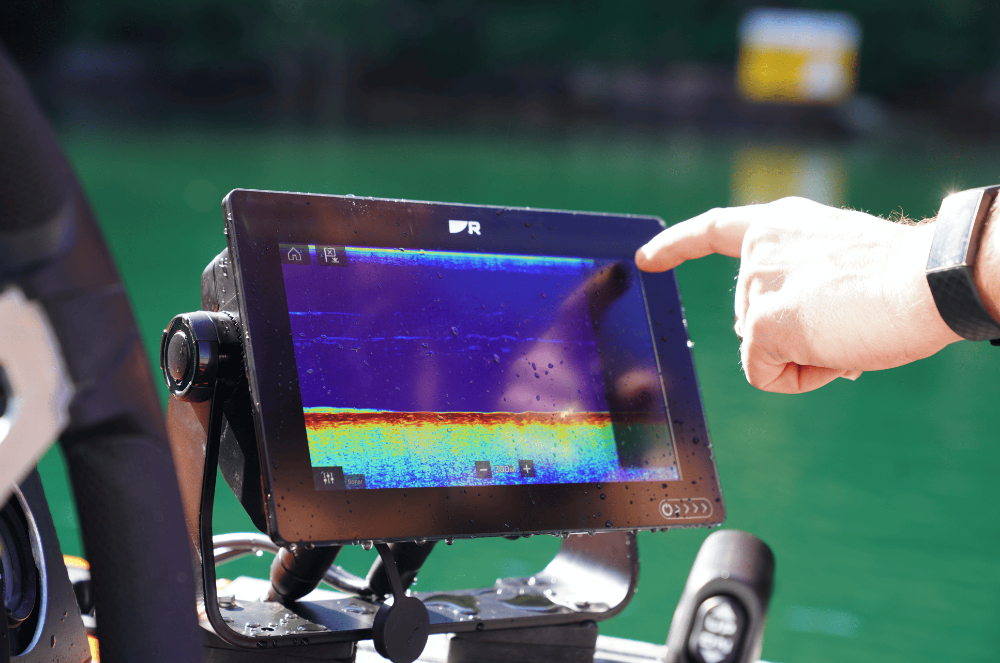
Ethernet-based Networks: Most of the leading manufacturers have created their own proprietary communication protocols and cables, connecting devices with high-speed Ethernet connectors. These systems have become the standard for sharing large amounts of data from radar imaging, electronic cartography and video cameras. Usually they’re installed alongside NMEA 2000 networks, which handle systems monitoring and control.
Would you prefer a touchscreen or a keypad for data input?
Keypad: The traditional push-button user interface is less expensive and easier to operate when you’re wearing gloves. Touchscreens used in smartphones, chartplotters and multi-function displays detect tiny electrical charges from your skin, but do not work as well when they are wet, in cold weather or when gloves insulate your hand. There are two types:
Single-touch touchscreen. You can swipe the screen and move icons around or push onscreen buttons instead of mechanical buttons. Some displays, such as Raymarine’s e-Series (with their HybridTouch interface) and Simrad’s NSS evo (Touch Sensible Technology), use a touchscreen combined with a few buttons and a rotary controller knob. Very slick and user-friendly.
Multi-touch touchscreen: This is the interface you use on your iPhone, iPad or Android smartphone. It includes “pinch to zoom” using two fingers.
Is your intended use inland, coastal, International, or some combination of these?
There are two considerations to ponder when asking yourself this question.
Preloaded charts: Most navigation devices, from the most basic to high-end chartplotter/fishfinder combos, include a choice of preloaded maps. Most allow you to add optional maps (usually stored on a small chip such as a MicroSD card). Choose the map option that best covers your boating region, and buy additional maps if you cruise or trailer to distant waterways. You can also upgrade to higher-resolution maps with more detailed charts, and amazing added features, for example, by upgrading your Navionics-compatible chartplotter to Navionics Gold or Platinum PLUS.
Transducers: If you’re looking for a fishfinder/chartplotter combo, consider the selection of a transducer. Those who fish in deeper waters and those who prowl shallow inland lakes have many choices of frequency, beam width and beam configuration. Check if the transducer is included with your combo. Many fishfinder/chartplotters designed for the small boat include a transom-mount transducer. Bigger network displays usually require you to choose and purchase a transducer separately.
So what’s available from the varying brands? Plenty! And plenty of new models. We check out the very latest from the world’s leading brands.
GARMIN
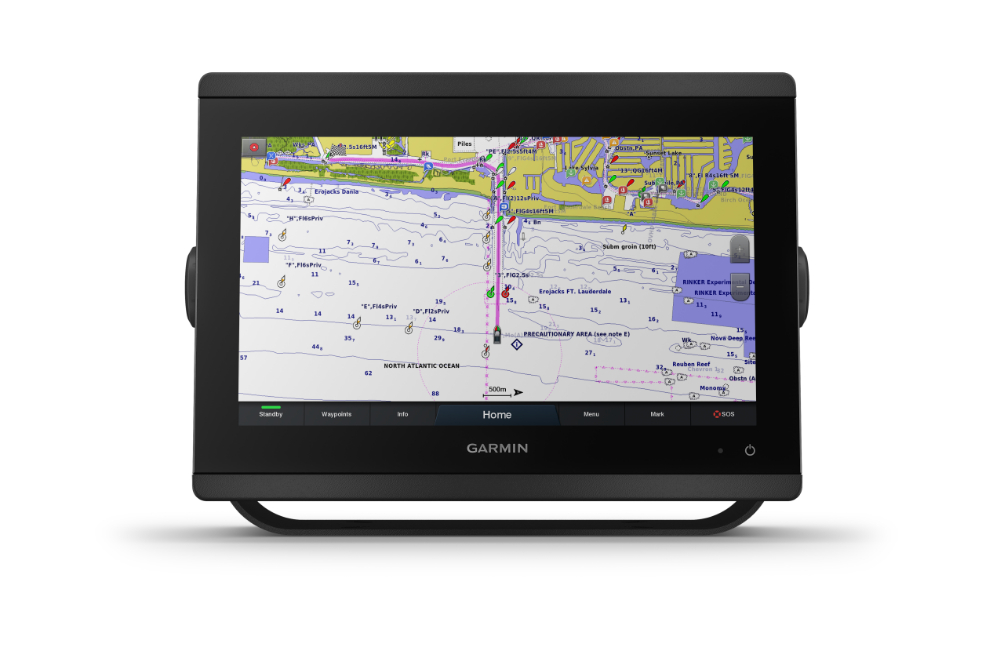

Garmin the US based, NMEA manufacturer of the year for seven years straight, offers an extensive range of chartplotters to suit all your boating needs. In the 12 inch range Garmin offers four models.
The GPSMAP 1222xsv is the base model which offers an advanced all-in-1 solution with our 12-inch GPSMAP 1222xsv keyed combo. It also has built-in support for Panoptix all-seeing sonar and premium Garmin sonar modules (transducers sold separately). It features a large, bright screen coupled with a quick and easy-to-use keypad interface with user-programmable keys and a multifunction control knob.
The ECHOMAP Ultra 125sv combo has a 12” keyed-assist IPS touchscreen display, with a transducer that provides Garmin CHIRP traditional sonar and Ultra High-Definition ClearVü and SideVü scanning sonars with 20% greater range and three frequencies for top performance at all depths. The device also has built-in support for Panoptix LiveScope LVS12 sonar and the full line of Panoptix sonars. The device is preloaded with BlueChart g3 coastal charts for Australia and New Zealand —both with integrated Navionics data and Auto Guidance technology. Auto Guidance is for planning purposes only and does not replace safe navigation operations
The GPSMAP 1253xsv offers a super sharp view from your connected helm with the GPSMAP1253xsv chartplotter. With its high-resolution 12” in-plane switching display, ultra sleek design and vivid sonar colour palette, it seamlessly integrates into your Garmin marine system. GPSMAP 1253xsv also features built-in Ultra High-Definition SideVü and ClearVü scanning sonars and supports 1 kW CHIRP traditional sonar as well as fully networkable radar, Panpotix LiveScope sonar and Auto Guidance technology.
Top of the line, the GPSMAP 8412xsv features a worldwide basemap, sonar, a 12” full HD in-plane switching (IPS) touchscreen display for wider viewing angles, superior clarity and sunlight readability, even with polarised sunglasses. Experience superior connectivity and networking solutions with complete control of your entire system, right at your fingertips.
FURUNO
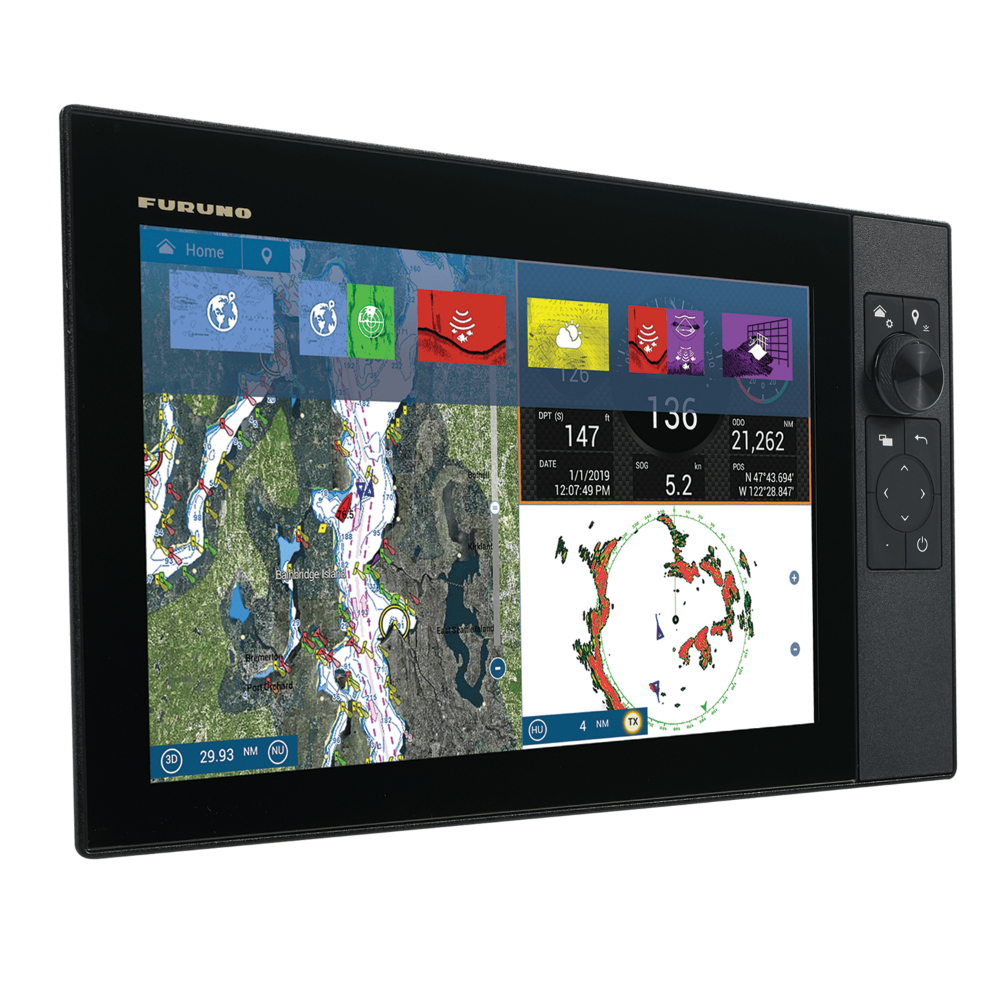
The latest 12″ Furuno MFD is part of Furuno’s industry leading TZ Touch3 range which includes the 9, 12, 16 and 19 inch sizes.
It features a new, powerful quad-core processor for lightning-fast response time and a built-in Dual Channel 1kW TruEcho CHIRP & CW Fish Finder.
You also get the best of both worlds with a full multi touch display, with edge-swipe features and single tap menu options, and a built-in keyboard that features a Rotoke, cursor pad and dedicated buttons.
The latest version of the TZT3 12″ software includes some amazing new features such as Fish-It & Drift-It, to help you locate the correct spot to start your drift so you’ll pass right over your fishing point and PBG mapping (Personal Bathymetric Generator) which allows you to create custom high-resolution shaded relief charts of the seafloor. This new software version 3.01 also includes other enhancements including CHIRP Side-Scan capability, the ability to automatically download NavCenter weather information on power-up, display trim tab status in data boxes and on customizable instrument pages, and a new sunlight background color setting for Fish Finders. The Furuno 12″ TZT3 MFD is Furuno’s most powerful MFD yet.
LOWRANCE
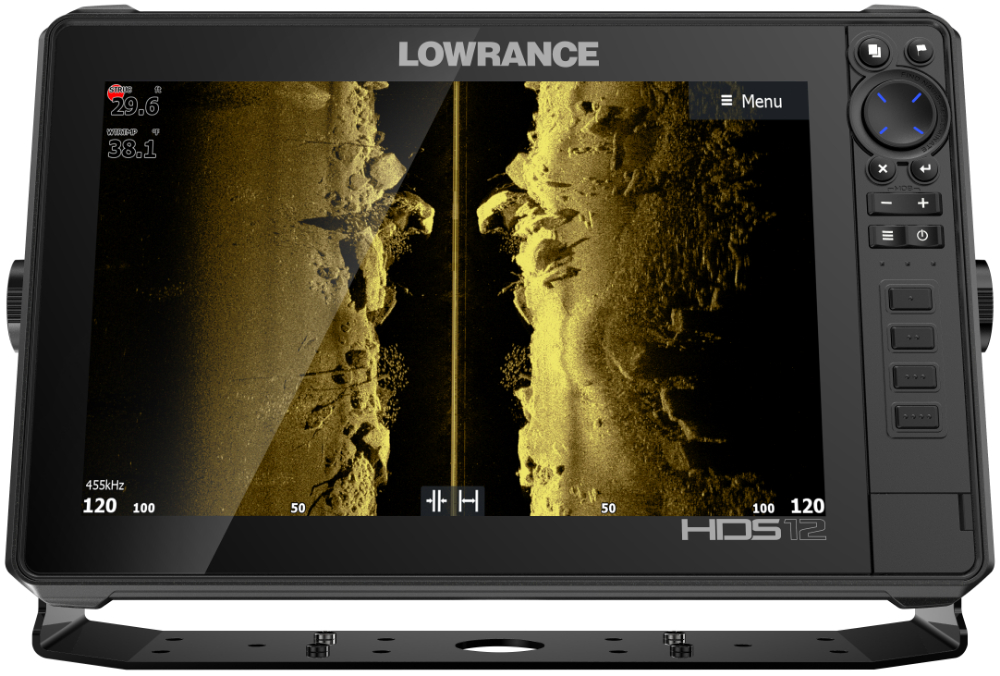
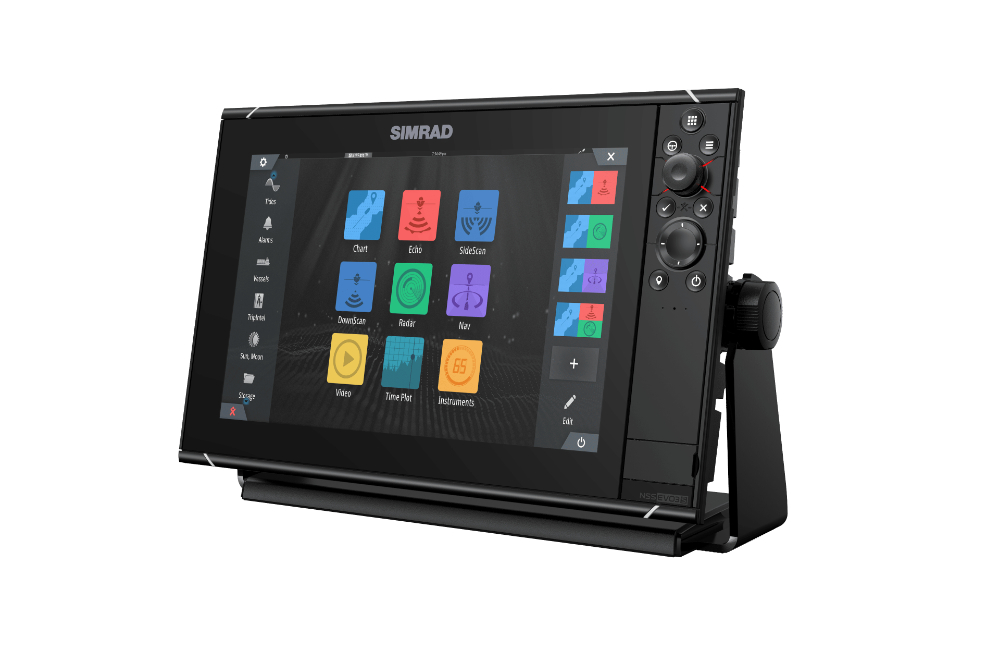
Lowrance was born out of America, specialising in freshwater fishing targeting Bass. However, it is now one of the biggest brands in New Zealand, being the choice of anglers using it in sub 7m boats. The Lowrance HDS Live is our premier Multi-Function Display (MFD), is designed for anglers who are looking to get the most out of their gear. So this unit has the ability for multiple transducers (including dual channel CHIRP, the ability to ping two frequencies) and ethernet ports, it features the fastest processor, as well IPS Screens so you can see the display in all conditions, even with Polarised sunnies. This is what sets it apart from the EliteFS range in addition to the larger screen size. The design language is rugged and robust. It can run the latest ActiveTarget Live Sonar, as well as Active Imaging (Downscan/StructureScan and CHIRP). With a 1 kW sonar output, you can also upgrade the transducer if you are looking for great depth with a range of transducers available from Airmar.
For the New Zealand market, the HDS Live comes with a Embedded chart from C-MAP for New Zealand, but you can upgrade to a C-MAP Reveal chart which features the breathtaking Shaded Relief Layer of the bottom. This makes it super easy to see reefs, drop offs and new spots. This is a gamechange for understanding the bottom. By having a C-MAP card you can also get the Genesis Layer – which has great data across some of New Zealand’s Lakes including the Rotorua Lakes, as well as Genesis Live, allowing you an ability to create high bathy charts on the fly. You can see the coverage online at C-MAP.com.
SIMRAD

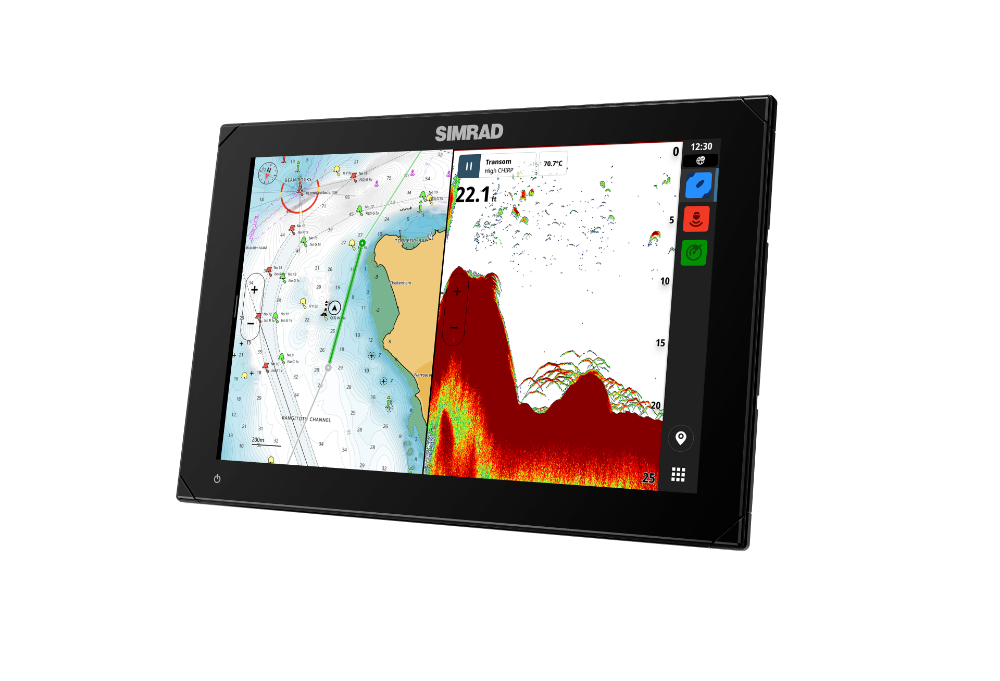
The NSS Evo3S is one of the most popular units across New Zealand. With a refined European design, Simrad is right at home on the larger sportfishing and cruisers. The Evo3S offers the best of both worlds, with a touscreen and full button control. The NSS Evo3S is designed to become your central hub, with the ability to add performance modules and other accessories to create your dream helm. Whether that is Radar, Autopilot, Engine and Audio Integration, the Evo3S is capable of it all. With a 6 core processor, the Evos3S is twice as fast as it’s predecessor.
NSSevo3S boasts exceptional bottom-tracking and fish-finding thanks to the built-in high performance echosounder with 1kW CHIRP-enabled Sonar. Compatible with a full range of Sonar tech – including ActiveTarget Live Sonar, ActiveImaging (CHIRP, SIdeScan and Downscan), as well as the ability to add an S5100, that offers a further three independent channels up to 3kW and deliver simultaneous high-resolution detail at multiple depth ranges.
The NSX 3012 is our latest MFD aimed more at families, or people who are new to boating. They might be smaller boats, and only require a single transducer. With an innovative, modern interface featuring powerful navigation capability with C-MAP support, you’ll see everything like never before. The NSX features integrated Sonar, Radar and Autopilot systems compatibility, and with our handy Setup Wizard tool means you’ll be up and running in no time.
The NSX features the latest operating system, and has been redesigned from the ground up. As a result the NSX has a new Chart Engine, and the NSX takes full advantage of this, with the C-MAP Discover and Reveal X charts. Improved planning and route plotting with Tides and Currents projections and our fastest ever Autorouting. Plus, there’s a new Map Inspection feature with one-touch access to information on locations, POIs, tides, channels and more.
Humminbird
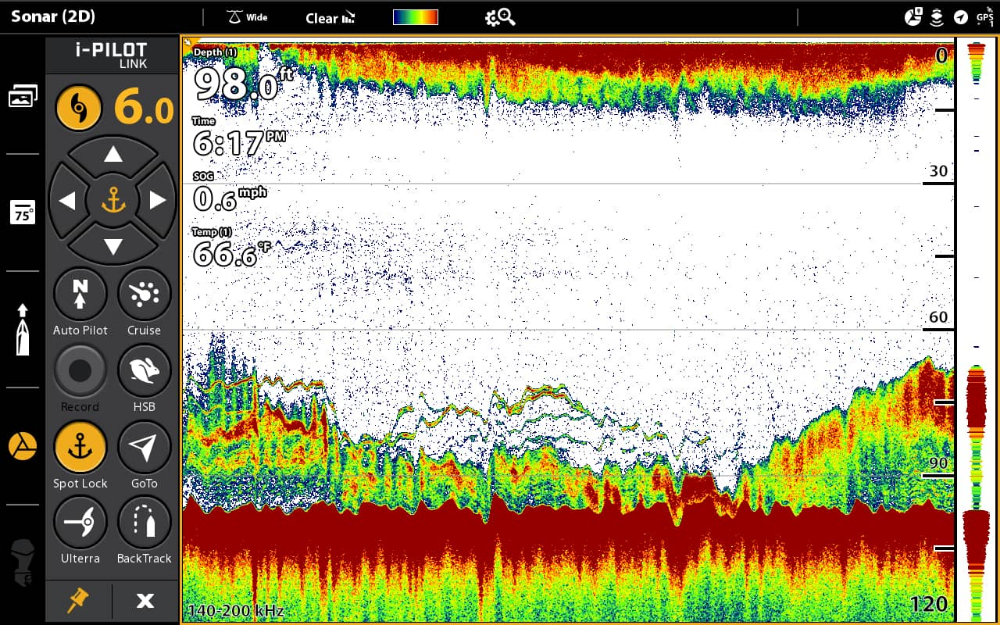
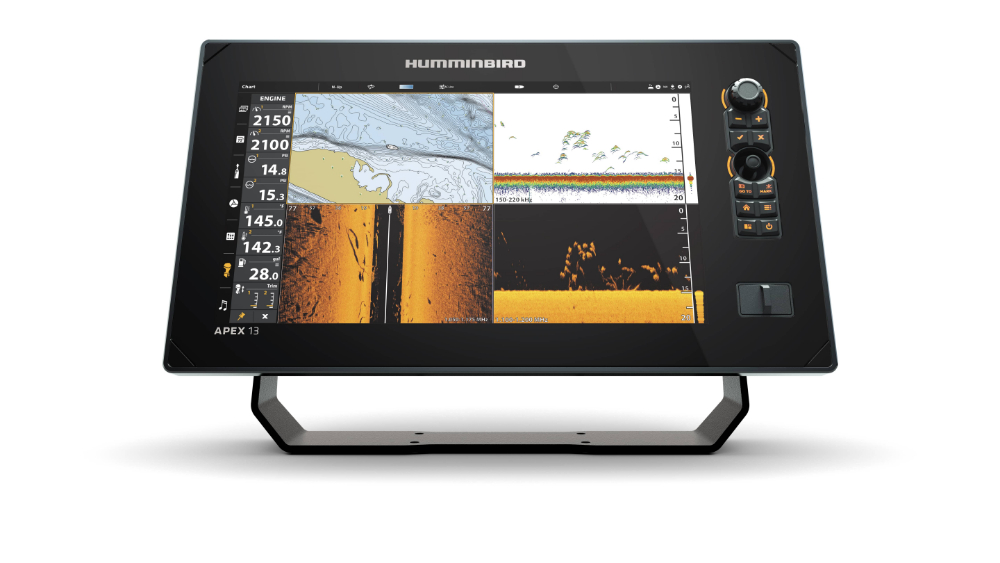
There are two products around the 12” MFD range from Humminbird, Apex 13 and Solix 12. The Apex Series provides clear sonar imaging on the sharpest multi-function display. MEGA Imaging+ and Dual Spectrum CHIRP sonar come standard, with even more performance from a dedicated sonar channel for accessory 2D CHIRP transducers up to 2kW. SA full HD touchscreen provides a customised display of information from advanced network options like NMEA 2000, HDMI In/Out, WiFi and Bluetooth.
You can add the power of the One-Boat Network to integrate the accuracy of Humminbird GPS charts, unrivalled boat control from Minn Kota, and reach new depths with wireless Cannon downrigger control.
The Solix Series combines cutting-edge technologies like MEGA Side Imaging+, MEGA Down Imaging+, Dual Spectrum CHIRP Sonar and AutoChart Live on an ultra-clear Cross Touch display. You can take full advantage of the touchscreen display with customisable views and settings that allow you to see multiple technologies at once and find what you want quickly via the convenient sidebar menu. Leverage the networking power of built-in Wi-Fi and NMEA 2000, as well as Bluetooth and Ethernet connections for compatibility with the One-Boat Network family of products from Humminbird, Minn Kota and Cannon.
RAYMARINE

With a legacy in marine technology spanning over 80 years, Raymarine products are renowned today for reliability, rugged design, and ease-of-use. The award-winning Axiom family of displays sport fastest on the market quad core processors, intuitive LightHouse software and innovative technologies like RealVision 3D sonar and ClearCruise Augmented Reality which overlays physical navigation objects on a live video display. All Axiom displays are expandable with radar, FLIR thermal cameras, black box sonar, instruments, pilots and more.
The Axiom Pro is Raymarine’s ‘all-in-one’ display. Available with true 1kW CHIRP sonar output and RealVision 3D which includes DownVision and SideVision for fishing around the boat and constructing the most accurate 3D model of the underwater world in real time. The HybridTouch interface allows Smartphone simple operation from the touchscreen, and the rotary controller and keypad give confident control in rough weather.
Axiom Pro is compatible with a range of cartography from leading map makers – Navionics, Lighthouse, C-Map and more. Navionics Plus and Platinum SonarCharts show 1ft HD contours, and Platinum charts can be upgraded to show Relief Shading which combines colour and shadow to give a clearer view of structure and contour. For more comprehensive chart data Raymarine RealBathy or Navionics SonarChart allows you to build detailed bathymetric charts in real time. The Axiom Pro is engineered for captains that want it all.
http://www.lusty-blundell.co.nz
Thanks to Tom Burdon, West Marine Advisor for help in putting this feature together. www.westmarine.com


